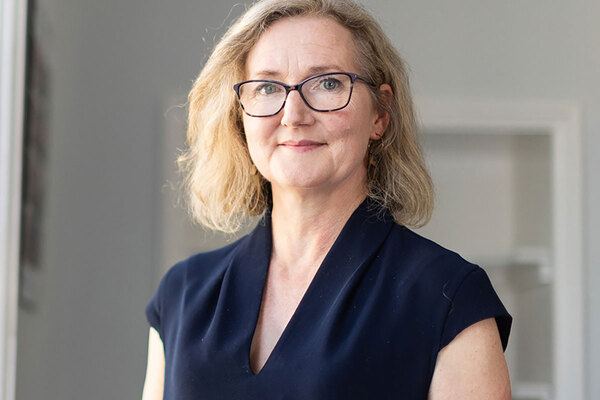You are viewing 1 of your 1 free articles

Dr Sandra Costa Santos is a senior lecturer at the Duncan of Jordanstone College of Art & Design, University of Dundee
Families in homes built since 2010 had a worse experience of lockdown. This should be a concern for policymakers
Families in post-2010 homes are more likely to be dissatisfied with home size, space for play and family time, storage and indoor air quality, research by Newcastle and Dundee universities shows. This made lockdown harder, writes Dr Sandra Costa Santos
If the UK’s housing stock fell short of meeting everyday family needs before the pandemic, the COVID-19 lockdown only made this worse.
Lockdown forced most families to introduce new activities to their home, increasing parent-child conflict. Space became currency for well-being, either heightening tensions or mitigating against conflicts through its ability to adapt to multiplying needs.
Despite the idea that we were ‘all in it together’, lockdown exposed pre-existing inequalities.
Factors such as the home’s size and access to outdoor space had a role to play in the home’s adaptability and ultimately in the well-being of the family.
The age of the home also appeared as a determining factor in comfort, with new build homes being the most uncomfortable to live in during the lockdown.
It is perhaps no coincidence that the shrinking-homes trend has caused concern over the past 20 years, leading to the 2010 London Housing Design Guide (LHDG) and the non-mandatory 2015 Nationally Described Space Standards (NDSS) as a response.
Despite these efforts, in 2015 the average new three-bedroom home was four square metres smaller than described in the NDSS, and more than half of new build homes were not big enough to meet the needs of their owners.
From a 2022 post-pandemic vantage point, the effect of shrinking homes on our well-being remains an urgent debate.
A study by Newcastle and Dundee universities offers insights into how newer homes supported family well-being during lockdown. The survey was filled in by 1,246 respondents across England and Scotland living in homes of different ages, with 200 of these households declaring that they spent lockdown in a post-2010 home.
In post-2010 homes during lockdown:
Families’ satisfaction with their home’s size was lowest
Having enough space allows families to ‘make room’ for wellness activities, such as individual relaxation, exercising or enjoying a meal together. Although families’ satisfaction with the size of their home during lockdown was similar across homes built up to 2010 (27-30% were satisfied), only 16% of those families living in a post-2010 home felt satisfied with the size of their home.
Structural changes were most likely
During lockdown, post-2010 homes were the most likely (22%) to build extra space, such as a garden room. The likeliness of structural change to gain an extra room was lowest in older homes, with only over 6% of families living in pre-1945 homes doing so.
Building an outdoor structure was most likely
During lockdown, some families accommodated new demands by building an outdoor structure. They were most likely (27.5%) to live in a post-2010 rather than any other type of home built up to 2010 (17-21%). Outdoor structures were used by families to improve wellness by means of extra storage, which allowed them to declutter, or finding space for exercise and play. While the effect of clutter and exercise on well-being has been long established, we also know that play is essential to the well-being of children and the entire family.
Child play was worst impacted
Play is related to better mental health, in particular free-play activities (building dens and messy play) and outdoor play. The lockdown made playing at home more difficult, according to 47% of respondents. But the lockdown’s negative impact on child play was significantly higher in post-2010 homes compared to older ones. It may be no coincidence that child play was worst impacted in those homes where connection to the outdoors was highlighted as a challenge during lockdown.
The indoor environment was most challenging
Quality of lighting, ventilation and heating was lowest in post-2010 homes. Problems with insufficient natural light or glare were more common in post-2010 homes (21%) than in homes built up to 2010 (12-14%). Families in post-2010 homes were also highly likely to find the lack of outdoor connection challenging.
This could suggest a decrease of environmental comfort in newer homes related to smaller windows. As there are no requirements for specific daylight levels in new build homes, last year’s government consultation on the Future Building Standards supported reducing solar gain by using smaller windows.
Policymakers must pay attention to building regulations that govern those aspects of housing design relevant to outdoor connection and indoor quality, such as window area. While the relationship between outdoor connection, indoor environment and well-being has been established, it is possible that contemporary concerns with operational carbon conflict with well-being.
The survey suggests that, although the home’s size matters, the negative effects of inadequate indoor environment and outdoor connection on well-being should not be overlooked by housing policy. This supports the recent movement towards designing dwellings by placing value on quality of design, instead of just size.
Dr Sandra Costa Santos, senior lecturer, Duncan of Jordanstone College of Art & Design, University of Dundee
Sign up for our tenancy management newsletter
Already have an account? Click here to manage your newsletters












